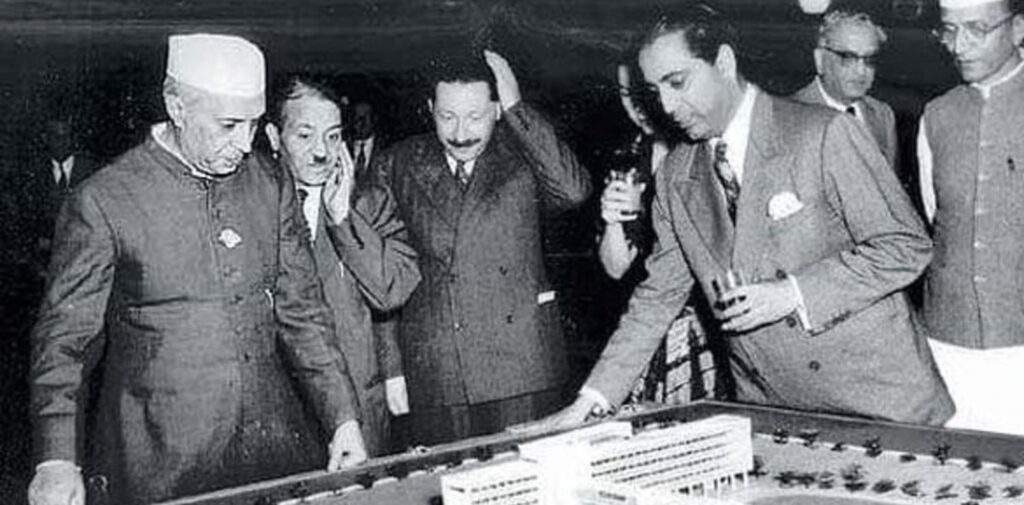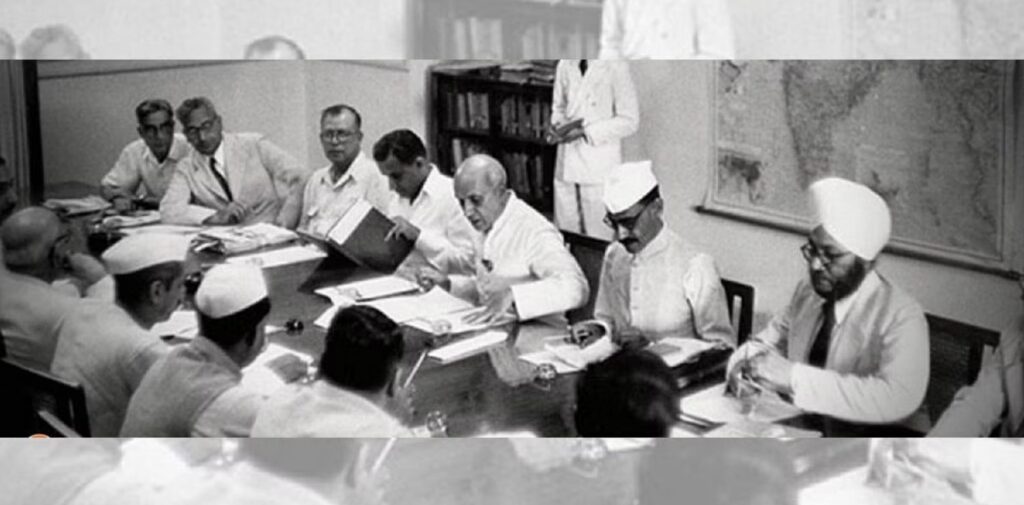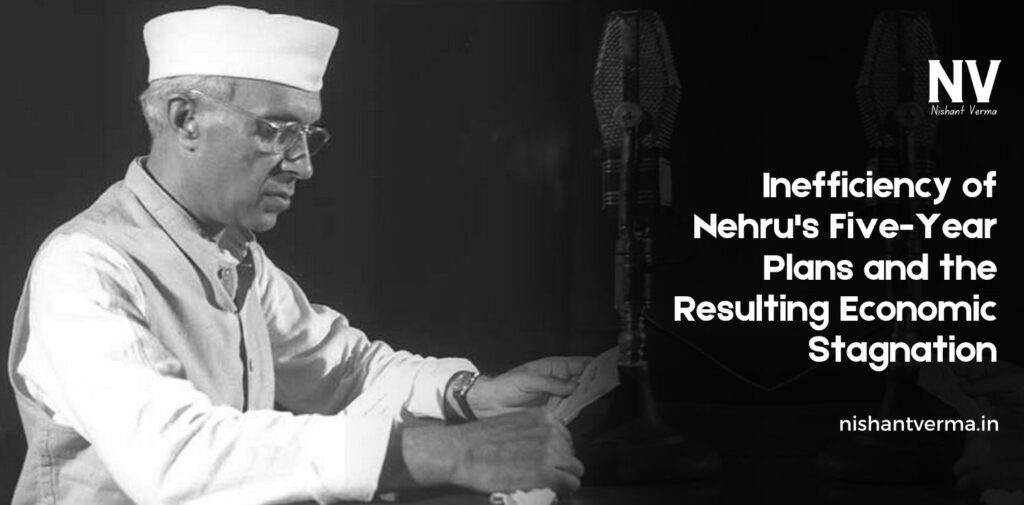After India gained independence in 1947, the country faced several challenges. The British rule had left India with a fragile economy, widespread poverty, and an underdeveloped infrastructure. Jawaharlal Nehru, the first Prime Minister of India, believed that India could achieve rapid economic growth through central planning. To do this, he introduced the Nehru Five-Year Plans, inspired by the Soviet Union’s success in planning its economy. However, despite the good intentions behind these plans, they ended up being inefficient, leading to economic stagnation and several challenges for the country.
The Concept of the Five-Year Plans
When Nehru came to power, he was determined to transform India’s economy. He wanted to modernize agriculture, develop industries, and build infrastructure. The idea behind the Five-Year Plans was to set specific economic goals for a five-year period and implement strategies to achieve them. Nehru’s government aimed to have a strong and self-reliant economy, free from the dependency on foreign countries.
The Five-Year Plans were designed with the help of planners and experts. The main focus was on large-scale industries like steel, electricity, and heavy machinery. The government believed that building these industries would create jobs, increase production, and ultimately lead to economic growth. Nehru also emphasized the importance of public sector enterprises, believing that the state should play a central role in economic development.

The Initial Enthusiasm and Failures
The first Five-Year Plan, launched in 1951, mainly focused on agriculture and rural development. The idea was to improve food production and make the country self-sufficient. While this plan did bring some improvements in agriculture, the overall progress was slow and uneven. The second plan, which focused more on heavy industry and infrastructure, faced several problems, including poor implementation, lack of resources, and inefficient management. Despite ambitious goals, progress in many sectors remained limited.
The problems in the second Five-Year Plan were mainly due to a lack of proper planning and the country’s overdependence on imported machinery and technology. The government relied heavily on foreign aid to fund its plans, but the returns were not as expected. Moreover, the focus on heavy industries often neglected the agricultural sector, which was still the backbone of the Indian economy. This led to uneven growth across different sectors of the economy.
Bureaucratic Inefficiency and Mismanagement
One of the major flaws in Nehru’s Five-Year Plans was the inefficiency of the bureaucratic system that was responsible for implementing these plans. The Indian bureaucracy, though large, was not well equipped to handle the complex tasks set out by the plans. There were frequent delays in the execution of projects, which resulted in cost overruns and wastage of resources. Government officials often lacked the technical expertise required for executing large-scale projects, and as a result, many initiatives ended up being half-completed or poorly managed.
The government also failed to create a transparent system for monitoring and evaluating the progress of the plans. This meant that issues went unnoticed for long periods, leading to further delays and inefficiencies. The inability to efficiently execute projects and track progress led to stagnation in many sectors, especially agriculture and small-scale industries.

Overdependence on the Public Sector
Another major issue with Nehru’s Five-Year Plans was the overemphasis on the public sector. Nehru believed that the state should take a leading role in industrialization, and he focused on establishing public sector enterprises. While this was important for building strategic industries like steel, power, and transportation, it also led to several problems.
The public sector companies often suffered from inefficiency, lack of innovation, and poor management. They were burdened with heavy government regulations and were not as competitive as private enterprises. As a result, many public sector companies struggled to become profitable, and the government’s investments in them did not yield the desired results. In the long run, this reliance on the public sector contributed to India’s economic stagnation.
Additionally, the government did not provide enough support for private sector growth. The lack of competition and limited opportunities for the private sector led to a slow pace of technological advancement and industrial development.
Lack of Focus on Human Capital and Education
Another weakness of Nehru’s Five-Year Plans was the limited focus on human capital, particularly education and skill development. While the plans emphasized industrial growth, there was not enough attention given to creating a skilled workforce to run and manage these industries. The country needed educated workers who could contribute to the development of high-tech industries and other sectors, but the educational system was not equipped to meet these demands.
The lack of investment in education meant that many of the people entering the workforce lacked the necessary skills for modern industries. This resulted in a mismatch between the types of jobs available and the skills of the workers, further hindering economic growth.
The Problem of Import Dependency
India’s economic policies under Nehru also led to a significant dependency on imports, particularly in sectors like technology and machinery. The Five-Year Plans relied heavily on importing foreign goods to build the country’s industries. This created a situation where India was constantly dependent on foreign countries for essential resources and technology.
While foreign aid and loans were useful in the short term, they made India vulnerable in the long term. This dependency on imports became a major issue when global economic conditions fluctuated, and foreign countries reduced their aid or imposed restrictions on exports. As a result, India faced a lack of resources to implement its development plans, which in turn slowed down economic growth.
Slow Economic Growth and Rising Discontent
Despite the ambitious goals set out in Nehru’s Five-Year Plans, the country experienced slow and uneven growth throughout the 1950s and 1960s. The industrial sector grew, but it did so at a pace that was much slower than what was needed to bring about real economic transformation. Agriculture, which employed the majority of the population, remained underdeveloped and inefficient. This stagnation in key sectors led to rising poverty levels and widespread dissatisfaction among the population.
India’s economy continued to struggle, and by the 1960s, the country was facing several economic crises. Food shortages, rising inflation, and unemployment became significant problems. The failure of the Five-Year Plans to address these issues led to growing discontent among the people, and many began to question the effectiveness of Nehru’s approach.

Legacy of Nehru’s Five-Year Plans
Nehru’s Five-Year Plans were well-intentioned and aimed at bringing about large-scale economic transformation. However, due to inefficiencies, bureaucratic mismanagement, over-reliance on the public sector, and lack of focus on human capital, the plans ultimately led to economic stagnation. The central planning approach, which worked well in some other countries, did not suit India’s diverse and complex needs.
Despite the shortcomings, the Five-Year Plans did contribute to some long-term benefits. For instance, the establishment of key industries like steel and power laid the foundation for India’s industrialization. However, it was clear by the 1960s that a new approach to economic development was needed. India would eventually move towards a more market-oriented economy in the 1990s, which led to more rapid growth and development.
Conclusion: Nehru Five-Year Plans
The inefficiency of Nehru’s Five-Year Plans and the resulting economic stagnation are a significant chapter in India’s post-independence history. While the plans were created with the intention of uplifting the country and building a self-reliant economy, their execution was flawed. Bureaucratic inefficiency, over-dependence on the public sector, and an underdeveloped workforce hampered their success. As a result, India’s economic growth remained slow, and the country faced numerous challenges in the decades following independence. The lessons learned from this period shaped India’s economic policies in the years to come, leading to a shift towards liberalization and market-based reforms in the 1990s.




